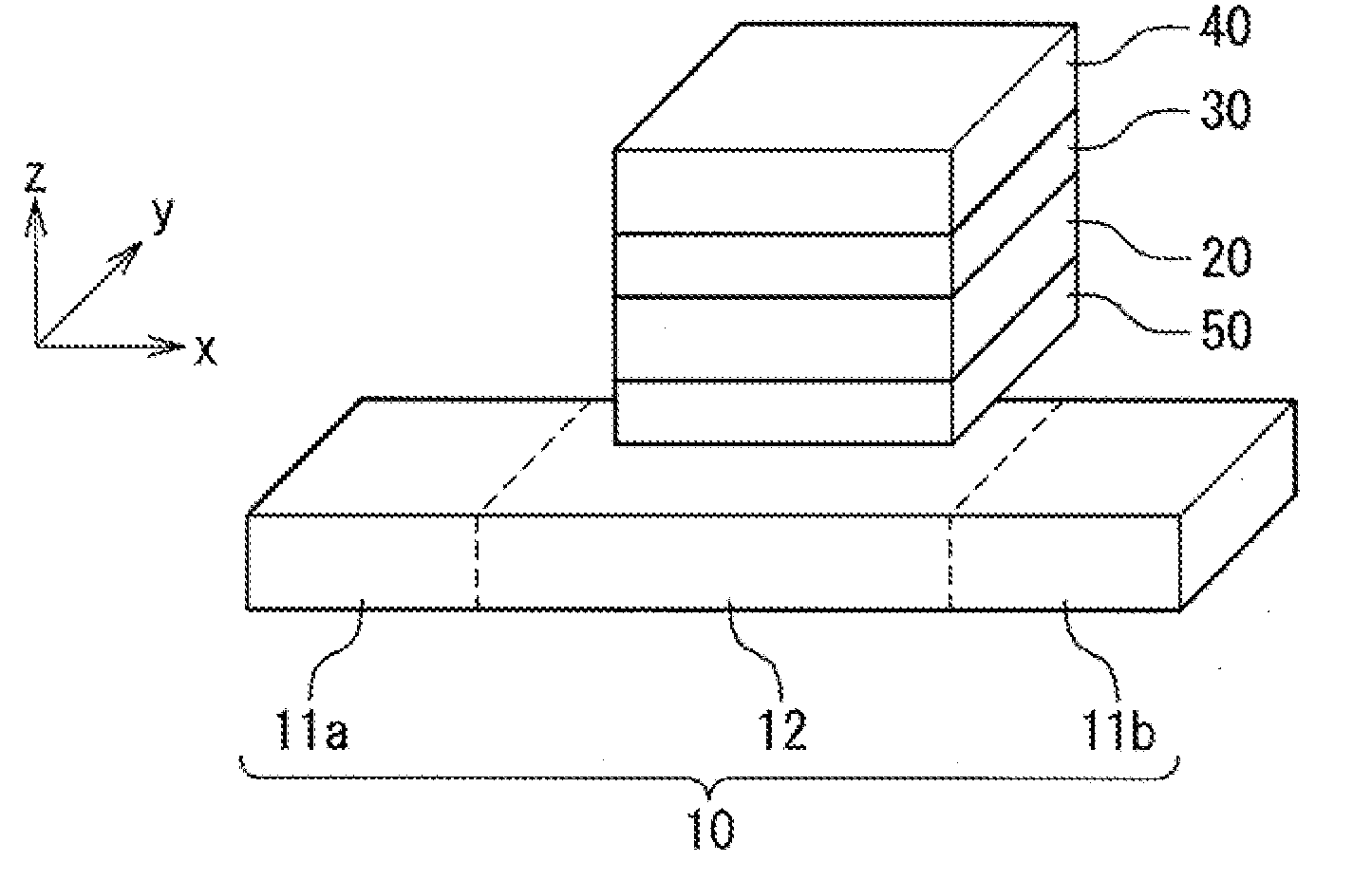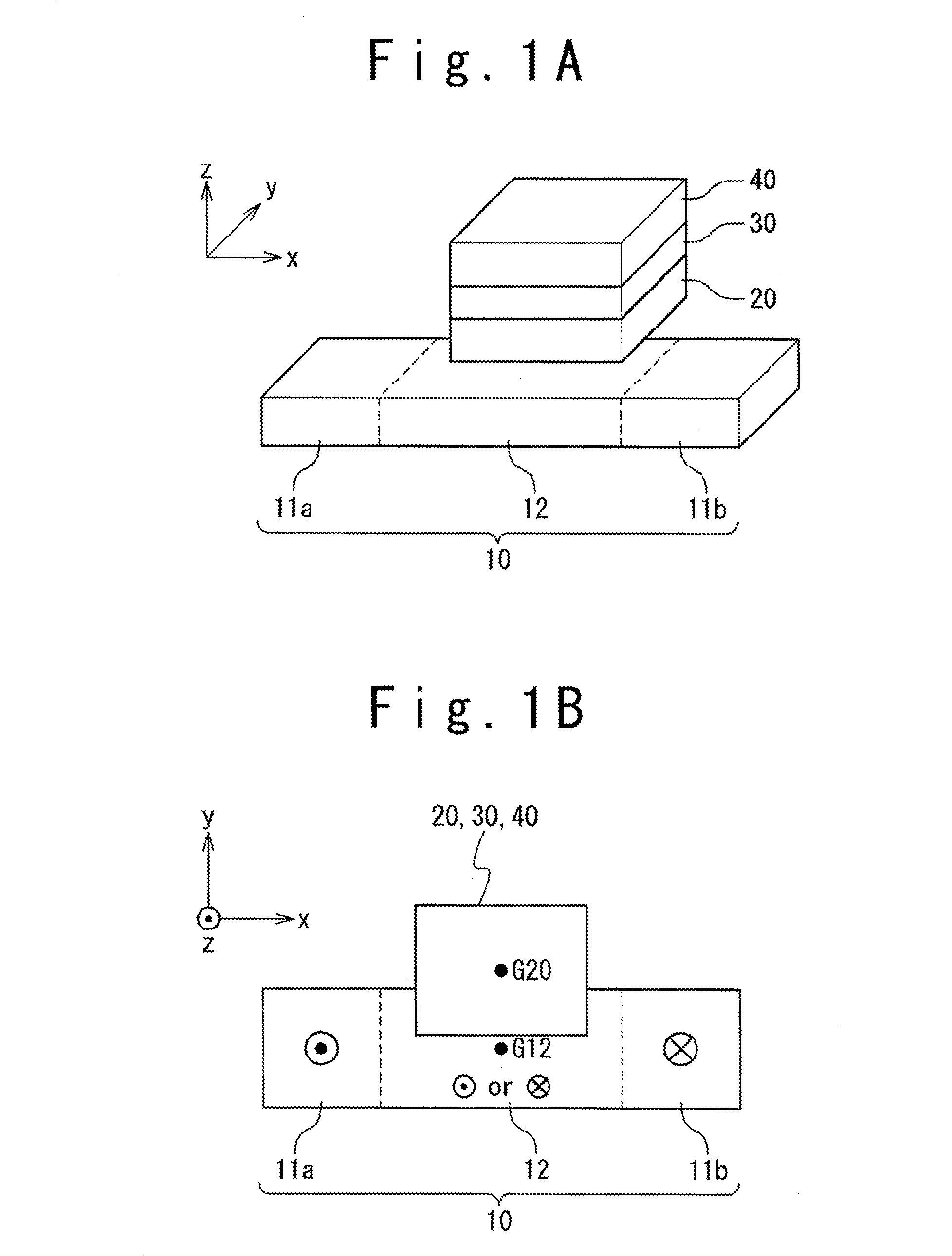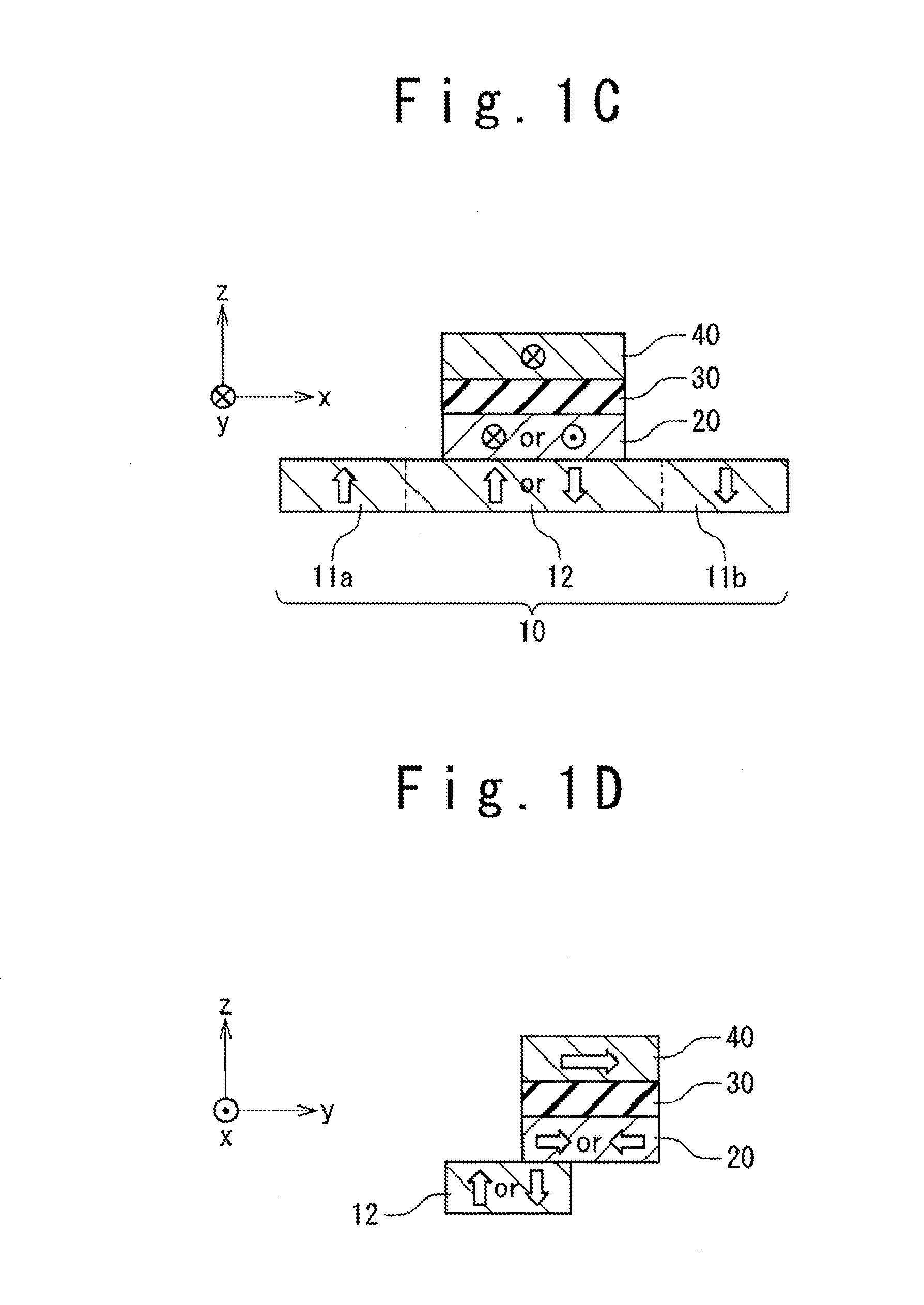Magnetoresistive element, and magnetic random access memory
a magnetic random access memory and magnetoresistive element technology, applied in the field of magnetoresistive element and magnetic random access memory, can solve the problems of increasing the write current, increasing the power consumption of writing, and poor competitiveness compared with other random access memory, so as to reduce the write current, the effect of reducing the write current and high thermal stability
- Summary
- Abstract
- Description
- Claims
- Application Information
AI Technical Summary
Benefits of technology
Problems solved by technology
Method used
Image
Examples
first modification
(First Modification)
[0110]FIG. 4A to FIG. 4C and FIG. 5A to FIG. 5C schematically show structures of a first modification of the magnetoresistive element of this embodiment. FIG. 4A to FIG. 4C show one implementation of the first modification, and FIG. 5A to 5C show another implementation. Among them, FIG. 4A, FIG. 5A are perspective views, and FIG. 4B, FIG. 5B are x-z sectional views in FIG. 4A, FIG. 5A, and FIG. 4C, FIG. 5C show y-z sectional view in FIG. 4A, FIG. 5A.
[0111]In detail, in the first modification, a conductive layer 50 is formed between the first magnetization free layer 10 and the second magnetization free layer 20. The conductive layer 50 is formed of a conductor. It should be noted that the conductive layer 50 may be magnetic or non-magnetic. When the conductive layer 50 is magnetic, the conductive layer 50 is preferably formed of relatively soft magnetic material. Also, the conductive layer 50 may be configured by the lamination film made of a plurality of materia...
second modification
(Second Modification)
[0115]FIGS. 6A to 6C, FIGS. 7A to 7C, and FIGS. 8A to 8C schematically show structures of the second modification of the magnetoresistive element in this embodiment. The second modification relates to the positional relation between the first magnetization free layer 10 and the second magnetization free layer 20.
[0116]One feature of the magnetoresistive element in this embodiment lies in the arrangement in which the center of mass G20 of the second magnetization free layer 20 is disposed displaced in the in-plane direction (namely, the direction parallel to the x-y plane), with respect to the center of mass G12 of the magnetization free region 12 in the first magnetization free layer 10, and the positional and size relations may be variously changed. Thus, various structures as well as the structures shown in FIG. 1A to FIG. 1D may be used for the magnetoresistive element in this embodiment. FIGS. 6A, 7A and 8A are perspective views of the respective structures,...
third modification
(Third Modification)
[0118]FIGS. 9A to 9C schematically show the structure of the third modification of the magnetoresistive element in this embodiment. The third modification relates to the positional and size relations between the second magnetization free layer 20 and the first magnetization fixed layer 40.
[0119]In the magnetoresistive element in this embodiment, the second magnetization free layer 20 and the first magnetization fixed layer 40 may at least partially overlap with each other in the x-y plane; the positional and size relations are arbitrary. Thus, the structure shown in FIGS. 9A to 9C as well as the structure shown in FIG. 1A to FIG. 1D may be used in the magnetoresistive element in this embodiment. FIG. 9A is the perspective view of the magnetoresistive element in the third modification, FIG. 9B is the x-y plan view, and FIG. 9C is the y-z sectional view. FIGS. 9A to 9C show an example in which the first magnetization fixed layer 40 is formed to overlap with a part ...
PUM
 Login to View More
Login to View More Abstract
Description
Claims
Application Information
 Login to View More
Login to View More - R&D
- Intellectual Property
- Life Sciences
- Materials
- Tech Scout
- Unparalleled Data Quality
- Higher Quality Content
- 60% Fewer Hallucinations
Browse by: Latest US Patents, China's latest patents, Technical Efficacy Thesaurus, Application Domain, Technology Topic, Popular Technical Reports.
© 2025 PatSnap. All rights reserved.Legal|Privacy policy|Modern Slavery Act Transparency Statement|Sitemap|About US| Contact US: help@patsnap.com



